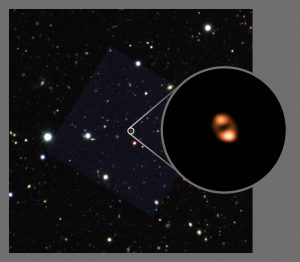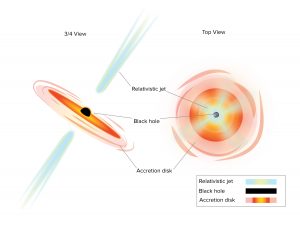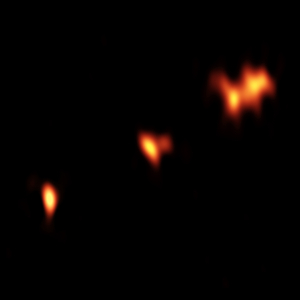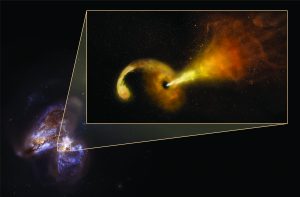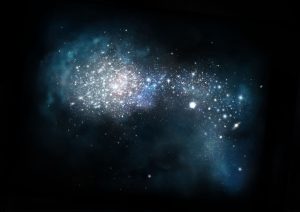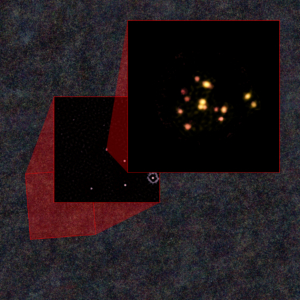Astronomers using ALMA, with the aid of a gravitational lens, have detected the most-distant galactic “wind” of molecules ever observed, seen when the universe was only one billion years old. By tracing the outflow of hydroxyl (OH) molecules – which herald the presence of star-forming gas in galaxies – the researchers show how some galaxies in the early universe quenched an ongoing wildfire of starbirth.
VLA Gives Tantalizing Clues About Source of Energetic Cosmic Neutrino
The track of an elusive, energetic neutrino points to a distant galaxy as its source and VLA observations suggest high-energy particles may be generated in superfast jets of material near the galaxy’s core.
Distant Quasar Providing Clues to Early-Universe Conditions
The sharp radio “vision” of the VLBA gives astronomers a detailed look at a galaxy as it appeared when the Universe was a small fraction of its current age, giving clues about conditions at that early time.
Astronomers See Distant Eruption as Black Hole Destroys Star
Years-long observation program surprises astronomers with evidence of a star’s violent death near the core of a distant galaxy.
ALMA Finds Most-Distant Oxygen in the Universe
ALMA detects signature of oxygen from galaxy 13.28 billion light-years away
Astronomers Witness Galaxy Megamerger
ALMA has uncovered 14 distant galaxies that are poised to merge, forming the core of what will eventually become a colossal galaxy cluster.






